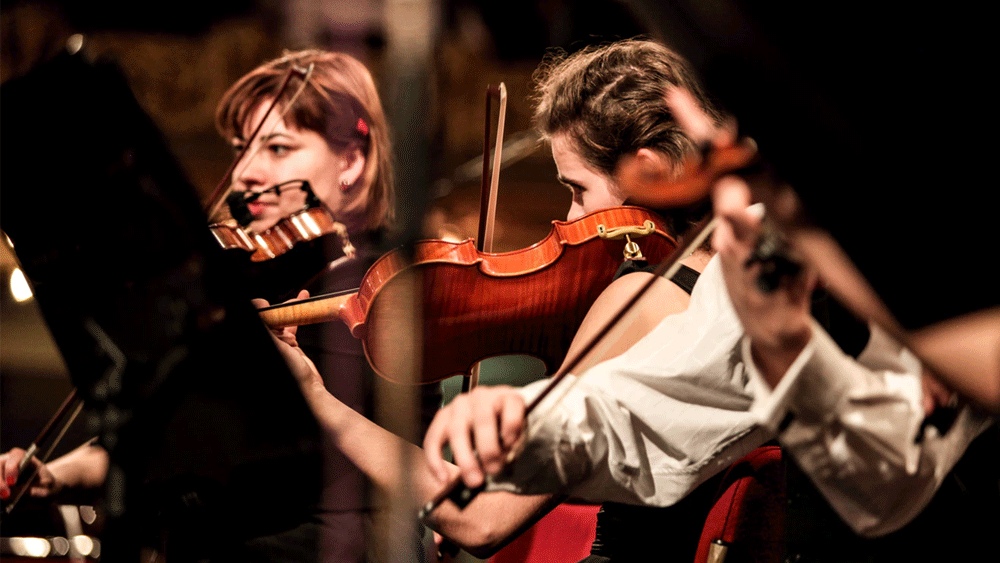Over the past couple of years, it’s been increasingly difficult for us to follow festival promotion’s cardinal rule. In most cases, maintaining the illusion of sales pressure is becoming a farce – to the extent that it begs the question as to whether or not it’s actually the most productive way to gain interest, or whether it’s time we were honest with our target audiences about our ongoing existential threat.
Like never before, festivals are having to search for ways to save money, not to make a profit, but rather to avoid making a loss. When costs have spiralled and ticket prices are fixed from 2019; and we’re faced with inflation rises, cost of living price hikes, and relentless media narratives of war, we are left with little choice but to reevaluate our budget. This has inevitable repercussions, not least on a festival’s capacity for flexibility, but also for individual staff members.
'We've been made to learn some invaluable lessons; ones that will yield more sustainable business models for events to come.'
The current dearth in ticket sales exacerbates the more insidious issues the live events sector is currently facing: general fatigue amongst staff; a failure on behalf of government initiatives to offer long-term sustainability; and complex difficulties securing infrastructure. What’s more, given the pandemic’s impact on how people choose to spend their down time, we’re increasingly finding ourselves competing against industries like television and film.
Nonetheless, a period of increased uncertainty in an already-precarious sector has forced us to reflect on our practice. Although the process is ongoing - and agonising at the best of times – we've been made to learn some invaluable lessons; ones that will yield more sustainable business models for events to come.
One particular issue that’s been brought to the fore is the industry-wide fatigue that has recently been compounded by the physical and mental effects of long COVID, increased workloads due to financial precarity, and general lack of custom when it comes to the demands of returning to a full-time profession. Whilst this will resonate across a wide cross section of industries, the impact on the live events sector has been made worse by a trend of doubling or tripling the workloads of individual staff members.
Smaller budgets simply cannot support the staffing structure that existed before, therefore necessitating a more streamlined crew with the same amount of responsibility assigned to less people. As a way of mitigating the extra pressure this applies on individuals, we’ve also seen a concurrent trend of recruiting less experienced staff on lower wages. Although this plugs the gaps on paper, it often does little to ameliorate the issue. Instead, it creates bottlenecks of knowledge that must be distributed at the time of the event’s unfolding, therefore burdening the more experienced staff members with more stress.
'Despite the obvious downfalls, this increased sense of precarity has had to be matched by equal parts care and creativity.'
From a production standpoint, the stumbling blocks have been no less difficult to overcome. Other countries' industry has been hit just as hard as it has in the UK and is slow to get back up to speed, especially when faced with increased shipping costs and the perils of Brexit. On top of this, whilst many festivals had invested time and trust over years to nurture those all-important working relationships; during the industry’s absence, many supply chain companies moved their business to other areas of industry, therefore generating new client bases. In a post-pandemic climate, it’s rare that the request of returning to old contracts is met with open arms, and if there is the potential for rekindling it’s often attached to a significant premium and the demand for bookings made months, if not years, in advance. This therefore restricts a festival’s vital capacity to be flexible: severe heat and storm planning is essential on paper, but it won’t be until the last minute that a festival would secure the appropriate extra infrastructure if these conditions actualised.
Despite the obvious downfalls, this increased sense of precarity has had to be matched by equal parts care and creativity. Whilst securing infrastructure at the last minute has never been good practice, with the trend of constantly changing creative designs, it gradually became more and more normalised. It’s therefore reasonable to see our current supply issue as the vital push we needed to bring the live events sector more in line with other industries. In a similar vein, we’ve had to become less reliant on physical materials, instead being more innovative in the way we offer shared experiences. In practice, this means expanding the offering of content; bringing in more partners with different angles on what the shared experience can be; and creating a more simplified, holistic event space that depends less on an army of creatives and construction crews.
'We must use this time whilst the dust is unsettled to re-evaluate our practice, not least in light of a post-pandemic landscape, but also that which pre-existed it.'
What’s more, we’ve been made to acknowledge the vital importance of emotional sustainability, not least when approaching from an angle of compassion and care, but also when considering the industry’s future. We must cherish our most valuable assets, those which set us apart from the industries we compete with – people. We must give our staff members a sense of value, a healthy balance between work and life, and the wellbeing support they need to keep them wanting to stay. This, in turn, will guarantee the influx of entry-level young professionals that our sector needs to thrive. Failing to address the stress issue with urgency will risk sacrificing the fresh ideas the younger generation bring and ultimately will stop us from moving forward.
We must use this time whilst the dust is unsettled to re-evaluate our practice, not least in light of a post-pandemic landscape, but also that which pre-existed it. Whilst government help initially was good – a short term injection of cash welcomed and succeeding to keep some companies afloat – it hasn’t been nearly as long-reaching or considered enough to enable the industry to bounce back from such an epochal moment in time. Therefore, for the festival industry to rise out of the pandemic’s ashes in the next two or three years, a healthy policy of recruitment and training, coupled with a commitment to plan further in advance must take priority.




